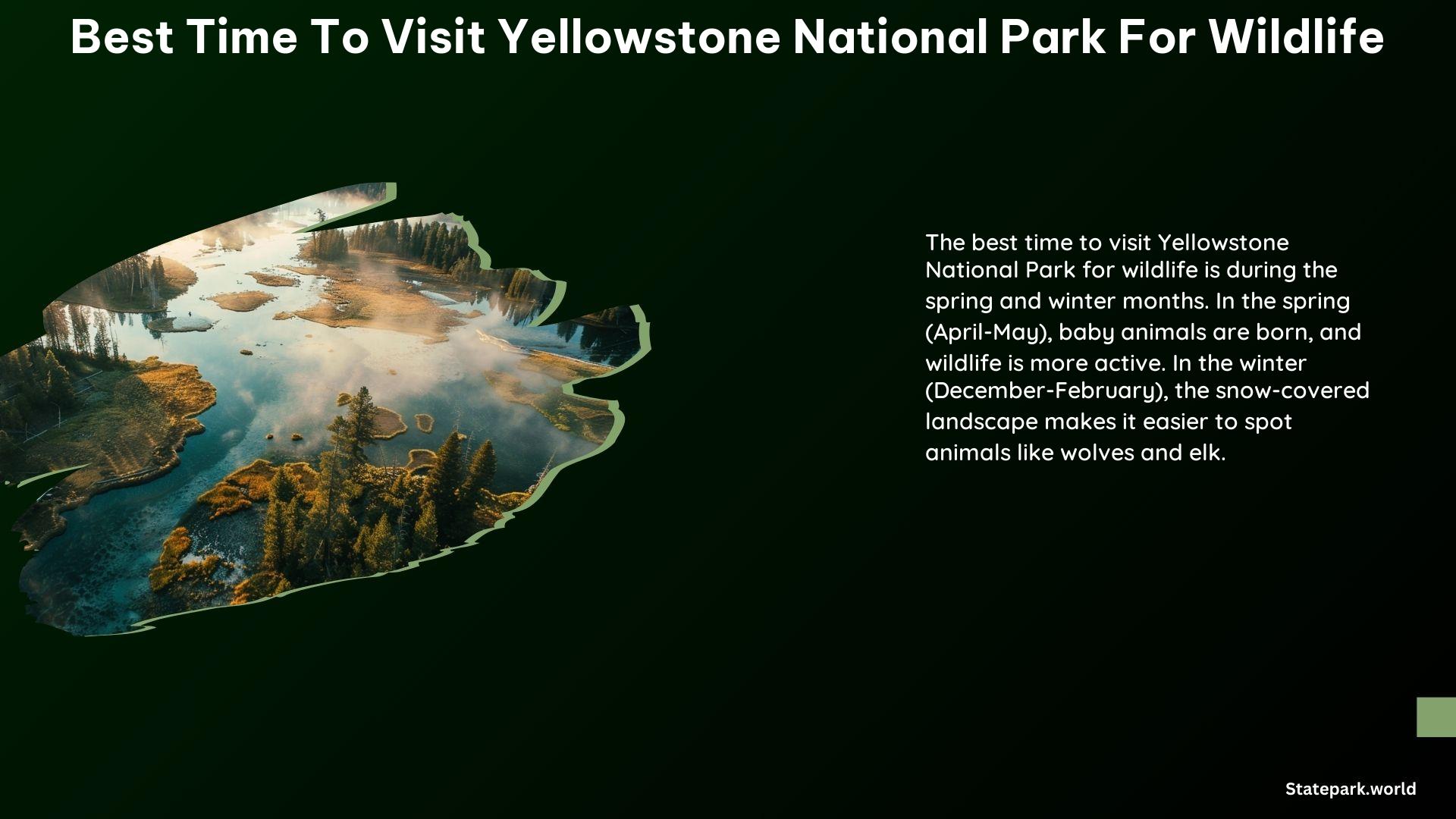Yellowstone National Park is a wildlife lover’s paradise, offering a diverse array of animal species that can be observed throughout the year. Whether you’re interested in spotting majestic bison, elusive wolves, or playful bear cubs, the best time to visit Yellowstone for wildlife viewing depends on the specific species you want to see and the activities you have planned. In this comprehensive guide, we’ll explore the highlights of each season and provide tips to help you make the most of your Yellowstone wildlife adventure.
Winter (December to March)
During the winter months, Yellowstone transforms into a winter wonderland, and the park’s wildlife becomes more visible and active. This is an excellent time to witness the park’s iconic species, such as wolves, coyotes, bison, foxes, elk, and otters.
Best for: Wolves, coyotes, bison, foxes, elk, and otters.
Activities: Snowshoeing, wildlife viewing, and cross-country skiing.
Tips: Pack warm, waterproof clothing and be prepared for variable weather conditions.
Spring (April to June)

As the snow begins to melt and the temperatures rise, Yellowstone’s wildlife becomes more active and visible. This is the perfect time to see baby bison, wolf pups, bears emerging from hibernation, and a variety of migratory birds.
Best for: Baby bison, wolf pups, bears, and birds.
Activities: Hiking, camping, and wildlife viewing.
Tips: Be prepared for unpredictable weather and varying temperatures.
Summer (July to September)
The summer months in Yellowstone are the busiest, with crowds flocking to the park to enjoy the warm weather and abundant wildlife. This is an excellent time to see the park’s geothermal features, wildflowers, and baby animals.
Best for: Geothermal features, wildflowers, and baby animals.
Activities: Hiking, camping, fishing, and wildlife viewing.
Tips: Expect crowds and long wait times at popular landmarks. Plan ahead for accommodations and activities.
Fall (October to November)
As the leaves begin to change and the temperatures cool, Yellowstone’s wildlife becomes more active and visible. This is the perfect time to witness the elk rut, observe bears preparing for hibernation, and see migratory birds passing through the park.
Best for: Elk rut, bears, and migratory birds.
Activities: Hiking, camping, fishing, and wildlife viewing.
Tips: Pack warm clothing and be prepared for changing weather conditions.
Specific Species and Activities
Bears
Bears emerge from hibernation in March and April, and can be seen with cubs in May. This is an excellent time to observe these majestic creatures in their natural habitat.
Bison
Bison calves are born in April, and the breeding season (the “rut”) occurs in late July and August. This is a great time to witness the herd’s social dynamics and the impressive size of these iconic animals.
Elk
Elk calves are born in May, and the rut takes place in mid-September. This is a prime time to see the impressive antlers and hear the bugling of the male elk.
Wolves
Wolf pups are born in April and May, and can be seen with their mothers in the spring and summer. This is an excellent opportunity to observe the pack’s social structure and hunting behaviors.
Birds
Neotropical migrants return to Yellowstone in March and April, and summer resident birds depart by October. This is a great time for birdwatchers to spot a variety of species.
Avoiding Crowds
If you’re looking to avoid the crowds and have a more intimate wildlife viewing experience, consider visiting Yellowstone in the shoulder seasons of April, September, and October. These months offer fewer visitors, more wildlife sightings, and milder weather.
Best months: April, September, and October for fewer crowds and more wildlife viewing opportunities.
Tips: Arrive early, choose less-known sights, and hike to higher viewpoints to avoid crowds.
Planning and Preparation
To make the most of your Yellowstone wildlife adventure, it’s essential to plan and prepare accordingly. Here are some tips to consider:
Accommodations: Book well in advance, especially during peak season (June to September).
Weather: Pack layers and be prepared for variable weather conditions, especially in spring and fall.
Guided Tours: Consider guided backpacking trips or day hikes to maximize your wildlife viewing experience.
By following these guidelines and tips, you’ll be well on your way to an unforgettable Yellowstone wildlife adventure. Whether you’re a seasoned park enthusiast or a first-time visitor, Yellowstone’s diverse and abundant wildlife is sure to leave a lasting impression.
